Marketers work very hard to produce and share high-quality marketing, advertising, and sales content that gets results. The process is often painstakingly executed and marketers must meet high internal standards.
There’s also another critical challenge: marketing compliance.
Large multinational companies have huge compliance departments that monitor and approve outgoing content, whereas smaller teams need to rely on marketers with lots of knowledge and understanding. In both cases, non-compliant marketing practices can be disastrous for a business.
Are you up to the job, when it comes to marketing compliance?
Here’s everything you need to know about this tricky area of marketing and how you can follow the rules every time, guaranteed.
Deliver compliant content with confidence
Set up a consistent and compliant marketing review process with Filestage.
What is Marketing Compliance (And Why Should You Care)?
Marketing compliance is the act of ensuring that your marketing, advertising, and sales content follows the strict rules, standards, and laws that are in place to protect consumers and their data.
Obviously, it’s important that consumers are protected from false claims and abuse of their data. That’s why governments and other organizations create, share, and police the relevant compliance rules.
For example, take the EU General Data Protection Regulation (GDPR). The arrival of this new regulation caused shockwaves throughout countless industries and transformed the nature of ad tech.
This regulation also meant that marketers around the world had to scramble quickly to make the necessary adjustments to their website and data management systems.
The GDPR brings heavy fines if contravened, and it’s just one regulation,and as we mentioned earlier, the consequences of non-compliance with any rule or regulation could be brutal for your business.
Break the rules and your business might:
- Face steep fines
- Lose existing and new customers
- Suffer significant reputational damage
Yes, the stakes are incredibly high.
With so much on the line, most professional and well-prepared marketers use a suite of marketing compliance software to help them develop foolproof marketing compliance strategies.
Let’s take a closer look at the key areas covered by marketing compliance.
What Are the Most Important Marketing Compliance Use Cases?
NOw that we’ve got a clearer, overall picture of marketing compliance, let’s zoom in to look at its most important areas:
1. Brand consistency
Consistency is the key to successful branding. In fact, consistently-presented brands are 3.5 times more likely to enjoy excellent brand visibility than those with an inconsistent brand presentation.
If you install a robust marketing compliance process that brings key decision makers into the process, you’ll be able to guarantee that all of your various marketing collaterals are compliant, in terms of their message and brand identity.
2. Product specifications and prices
There are strict national and international guidelines, which businesses must follow, when sharing product specifications in their marketing collaterals.
For example, in the USA, the Federal Trade Commission enforces strong truth-in-advertising laws that demand businesses only ever share advertisements that are truthful and evidence-based.

Digital advertising platforms, such as Amazon, Facebook, and Google, also maintain detailed ad specs and policies that businesses must follow, in order to remain compliant and to share their marketing collaterals.
Breaching those rules can result in hefty fines or penalties, as well as serious issues for your business. This is where a robust and bulletproof marketing compliance strategy can serve your business.
3. Terms of service
It’s very important that businesses are forthcoming in their terms and conditions, so that they treat their customers fairly. SaaS businesses need to work very hard to ensure they can explain how their complex services work and how they’re going to treat important factors.
In the EU, unfair contract terms have no legal or binding force on consumers. Consumers know how to exercise their rights and not fulfilling them could mean that businesses lose customers and find that their profits are harmed.
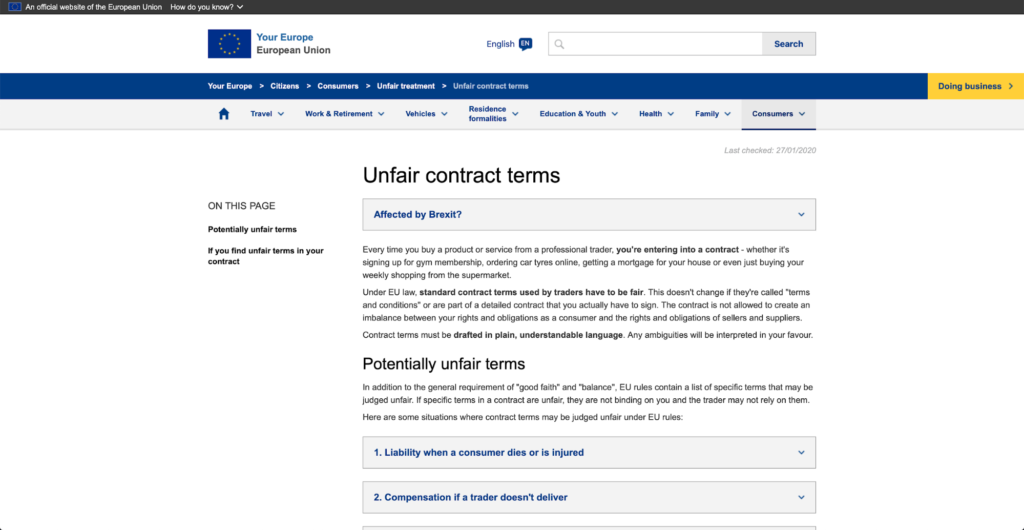
This is why marketing departments must collaborate with other areas of their business, in order to ensure that their terms of service are always clear, up-to-date, and fair.
4. Data management
Marketers need to amass significant amounts of consumer data, so that they can operate as effectively as possible. They’ll need to use a range of platforms and tools to do this, and it’s absolutely critical that they meet all stringent rules and regulations.
As we will touch on in the next section, there are many high-profile examples of businesses who have failed to comply with data regulations. Those businesses received significant fines and punishment for breaching those rules.
If you’re going to run a safe and compliant marketing department, you’ll need to factor data management into your marketing compliance plan. This will mean making the right choices for your customers and alerting them to any changes in how you use their data.
5. Product risks
Businesses need to make sure that they place the appropriate packaging warnings on their physical products. For example, for food and drink items, marketers must follow the appropriate specific rules to protect customers.
A thorough marketing compliance process helps businesses make sure they are following all of the rules and are protecting themselves from a legal perspective. One again, this helps businesses avoid steep fines and penalties.
The most effective businesses ensure they stay on top of the latest rules and regulations, while implementing intelligent and logical ways to guarantee compliance.
5 Examples of Marketing Compliance Pitfalls (That You Should Avoid at all Costs)
So, those are some of the common areas of marketing compliance. However, what happens when it all goes wrong and businesses drop the ball?
Here’s a look at five examples of marketing compliance pitfalls, that you should avoid at all costs:
1. Handling user data – Facebook
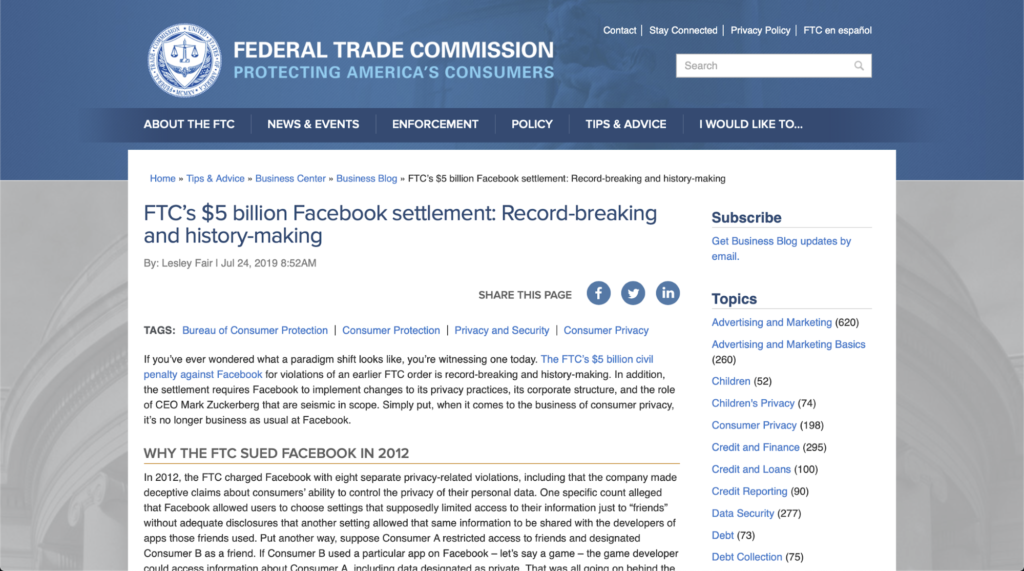
In today’s digital world, consumer privacy is paramount.
In 2012, the FTC found that Facebook was not compliant with its data protection rules, and it charged the platform with eight privacy-related violations. The FTC deemed that Facebook was abusing the trust of its users and sharing their data without their consent.
The FTC settlement was harsh for Facebook. It included:
- An unprecedented $5,000,000,000 penalty
- The installation of a new privacy structure
- New FTC tools to monitor the platform
Although the stakes may not be as high for your business, you still cannot afford to neglect the national privacy laws and regulations of your nation.
2. Creating unfair terms – Amazon
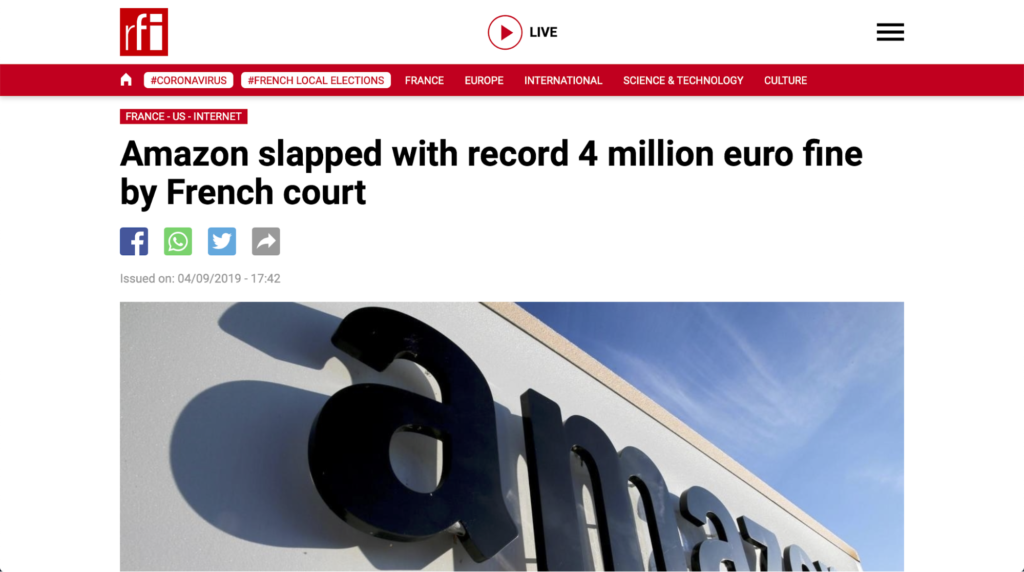
Amazon was hit with a huge four million Euro fine because of the content of some of the clauses within its contracts. French courts discovered that the Amazon’s contracts contained unreasonable demands, which would place their providers’ businesses in jeopardy.
In addition to the fine, Amazon was told that it would receive additional fines if the six offending clauses were not changed within six months. This story underscores just how important it is for the terms of service and contracts to be produced in collaboration between all your business’s departments.
3. Failure to comply with GDPR – Google
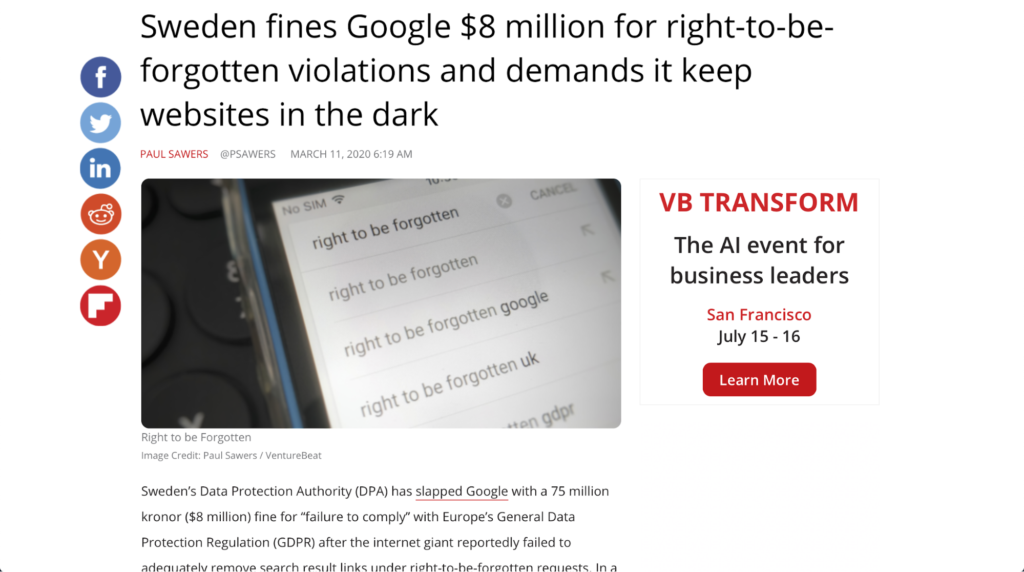
In March 2020, Google was slapped with an USD 8 million fine for failure to comply with Europe’s General Data Protection Regulation. The fine was imposed, after Google failed to remove the search result links of right-to-be-forgotten requests.
This was a significant fine and was just the latest, in a series of large GDPR infraction penalties, that the company received in recent years. Google’s woes are a cautionary tale for marketers and businesses around the world, who struggle to comply correctly with their GDPR commitments.
4. Inconsistent branding – New Coke
Coca Cola has one of the world’s strongest brands; however, in 1985, the company took one of the greatest risks in consumer goods’ history and announced a new formula for its popular beverage.
Billed as “New Coke”, it was a marketing disaster for the consumer goods’ giant, and its launch was faced with a huge backlash from customers across the United States. As we touched on earlier, consistency is important for brands. This was the first time that the Coca-Cola company had changed the formula in 99 years and the negative reaction was immense.
This example really shines a light on how important it is for you to treat your brand with respect. If you make unexpected or unreasonable changes, you’ll run the risk of alienating your brand’s followers .
5. Poor messaging – Kenneth Cole
In 2011, a social media manager at Kenneth Cole landed the company in hot water, thanks to this controversial tweet. The offending social media message made light of a very serious political situation and alienated its followers, who saw this as trivializing a dramatic national situation.
This example underscores how important it can be to align the messaging within a business and to create clear compliance guidelines. If the marketing compliance process had been better within Kenneth Cole, this disastrous miscommunication could have been avoided.
How to Incorporate Marketing Compliance Into Your Content Creation Process
There’s a lot at stake, isn’t there?
We’ve listed the steps you can take, to incorporate marketing compliance into your content creation process and in turn to avoid those dramatic pitfalls.
1. Train your team members
First things first, you’ll need to train your team members so that they understand the latest compliance rules and how and why they must adhere to them.
If your team members have a clear understanding of what they need to achieve, you’ll reduce the amount of back and forth that is required, to resolve any compliance issues concerning your content.
Here are just some of the ways that you can train your team members about compliance:
- Use the onboarding process
It’s important that you use an onboarding process, to explain the internal processes and rules that you need to abide by. This might involve a comprehensive run through a CRM, or an explanation of the relevant technical information.
- Internal memos
Whenever a new rule appears, keep your team in the loop. You can use internal memos and/or emails to notify team members, when something changes that impacts their work.
- Workshops
If a particularly dramatic change is going to impact your business, it might be appropriate to host a training workshop to go through the change.
2. Use templates while working
When you first outline your brand guidelines, it’s often a good idea to create robust templates, in parallel, which guarantee consistency. For example, if you use InDesign or PowerPoint, you could use a Slide Master.

Source: Microsoft Office Support
You should ensure that your team members know about these templates and where to access them. This means that it is probably a good idea to host them on a shared server or cloud platform that your team members can access.
You should also keep these templates updated on a regular basis. To do this effectively, consider creating a checklist of templates that you’ll need to update whenever you make a new adjustment to your brands or processes. That could include things such as:
- Logo changes
- Updates to boilerplate text
- The year in copyright clauses
3. Leverage a review and approval tool
Once your team members have created an initial draft, it’s important that they share it with the rest of the team, to collect feedback and to secure approval.
All too often, this process involves endless email chains and countless changes because of miscommunication and crossed wires.
These are good reasons to make sure you use a feature-rich review and approval tool.
The best review and approval tools will make it simple for your team members to share their work and to collect their feedback in one centralized location. Your reviewers will also be able to share their feedback quickly and clearly, which will further expedite the process.
Learn more about how Filestage can help you with marketing compliance.
4. Use a digital asset management platform
Once you have created your marketing collateral and secured the final approval, you’ll want to ensure that your sales and marketing team members only ever use the final version..
To make sure this happens, you’ll need to invest in a high-quality, digital asset management platform. This will make it simple for you to update files, manage permissions, and drive transparency.
(We’ll take a look at some of the best digital asset management platforms later in this article.)
7 Actionable Marketing Compliance Best Practices
So that’s the shape of the general marketing compliance process, but what about some tips and tricks that you could use along the way?
Here are seven actionable marketing compliance best practices that could help you improve your results while avoiding compliance headaches.
1. Focus on creating clear guidelines
The most effective way to boost your marketing compliance results is to focus on crafting clear and visible guidelines, for yourself and your team members.
These important guidelines will act as a handy reference, which you and your team members can turn to, whenever you have any doubts or questions. This also means that it’s important that your guidelines are created using the most accurate and up-to-date information.
These guidelines will become a critical resource for your marketing department, so invest the time to make sure that they’re clear and effective.
Alongside the guidelines for your brand and tone of voice, your compliance guidelines will dictate the approach that your marketing department should take to key marketing areas, such as :
- Brand consistency
- Data management processes
- Boilerplate texts
- Product specifications
2. Monitor adherence to marketing compliance
It’s important to create guidelines for the team, but it’s equally imperative that they’re actually used – to full effect – by your marketing team. This is why your guidelines should be usable, visible, and exhaustive.
You can use several techniques to monitor whether (or not) your marketing compliance guidelines are being used effectively: We have listed the more important ones below.
Review and approve your content
The most effective way to monitor whether your guidelines are being used, is to thoroughly review and approve your content as a team. Using the right review and approval tool(s), you’ll be able to identify any potential issues with your content.
Monitor your output
The most obvious way to monitor the impact of your compliance guidelines is to monitor your output. Together with your team members, you’ll want to keep an eye on every single collateral that comes out of your department and assess whether it is compliant.
Ask your team members
You might also decide to just ask your team members – intermittently – whether they are using your compliance guidelines. This will give you a good indication as to whether they are being used, and if not, it opens the conversation about ‘why not’.
3. Keep your documentation updated
Once you have created clear guidelines and documentation, you can’t afford to let them become outdated. If your guidelines are outdated, you run the risk of giving your marketing team the wrong information, which can also become a cause of compliance risks.
Consider putting the following measures in place, to ensure that your documentation is kept updated at all times.
Schedule regular reviews
Schedule a review of your marketing compliance documentation at regular intervals; for example, each quarter. This regular review will give you the opportunity to reflect on your guidelines and to discover whether anything has changed significantly in the recent past.
Incorporate changes immediately
Let’s imagine that your compliance team creates a new boilerplate text that should be used in all of your brochures and presentations. You’ll need to ensure that this change is reflected immediately in your compliance documentation, as well.
4. Boost visibility
Your marketing compliance guidelines are useless if your team members don’t use them. Here are a few techniques that you can use to ensure your team members stay on top of your compliance guidelines.
Share file changes automatically
If you use a digital asset management platform or a file-sharing tool such as Dropbox, you’ll be able to send your team automatic notifications if you make significant changes to your compliance guidelines.
Communicate changes to your guidelines
If there’s a significant change to your guidelines, you’ll want to communicate that to your team members. You might do this using an internal communication tool or you could do it in a regular email newsletter.
Include your guidelines in onboarding packages
Whenever you welcome a new team member to your marketing team, ensure you give them a rich onboarding package that includes everything they might need. Your marketing compliance guidelines should be an integral part of that package.
5. Monitor legal updates that impact you
The safest and most compliant marketing departments are those that work hard to monitor any and all legal updates that impact them. If you are keeping your eye on the latest regulatory and industry trends, you’ll never have to worry about being blindsided by a new change.
Here’s a look at some examples of key areas that you’ll want to monitor:
- Data management changes
- Specific industry developments
- Changes to marketing conventions
- Data collection regulations
6. Invest in digital asset management
The need for flawless marketing compliance means that the digital asset management (DAM) industry is experiencing significant growth (in fact, it’s expected to be worth around USD 5.66 Billion by 2022).
Digital asset management platforms are valuable to a business as they give marketing teams the ability to ensure that team members, across their business, only ever access compliant marketing collateral.
For example, if a salesperson within your business needs to share a presentation with a prospect, you can be certain that they’ll only ever access the latest version of your materials.
The best DAM platforms also make it simple for marketers to adjust and manage authorizations and permissions, to control which team members can access which collaterals.
7. Use a great review and approval platform
When it comes to creating show-stopping content that’s compliant with internal and external rules, it’s essential that marketers use a feature-rich review and approval platform.
Those platforms can enable marketers to share their work-in-progress materials widely, in order to gather valuable feedback and to gain project-critical approval. Those review and approval platforms also help marketers collect in-context feedback that makes it easy to implement accurate changes.
Filestage makes it simple for marketers to share their projects with just a few clicks. The tool can also double up as a digital asset management platform, which can be used to host and share important files.
Marketing Compliance Software
Now that we’ve got a clearer picture of marketing compliance and how to incorporate it into your content marketing and creation process, let’s take a look at some of the best examples of marketing compliance software out there.
Content Review, Proofing, and Approval Software
We’ll begin by exploring the tools that you can use to review, proof, and approve your content with your team.
Filestage
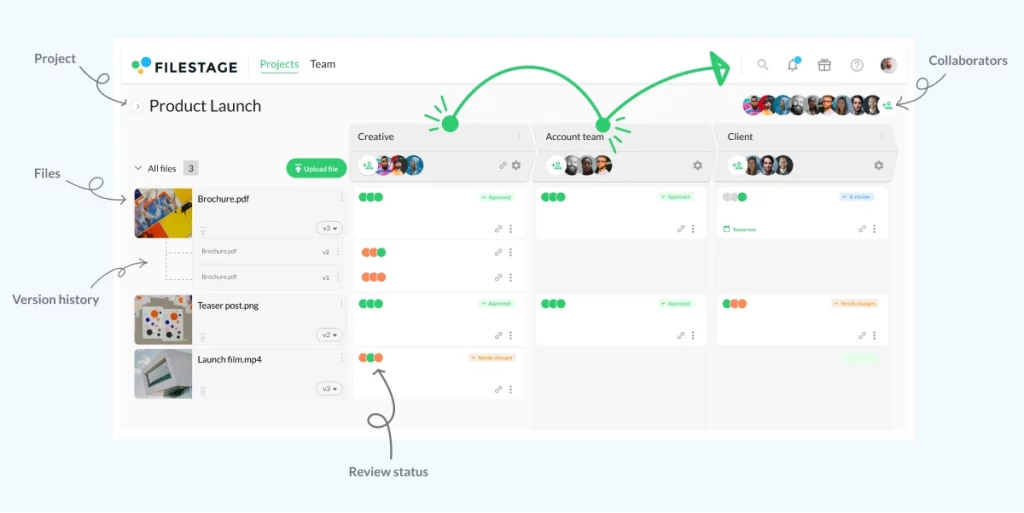
Filestage is a powerful content review platform that lets marketers share their collaterals within and beyond their team. Marketers share their work in a secure environment, with just a few clicks and then they can invite various stakeholders to give their approval.
This functionality makes Filestage the natural choice for ensuring compliance to compliance strategy.
Pros & Cons
- Comment directly on all file types
- Track the approval status of projects
- Ensure time-stamped and documented approval
- Dedicated mobile app in development
Deliver compliant content with confidence
Set up a consistent and compliant marketing review process with Filestage.
GoVisually
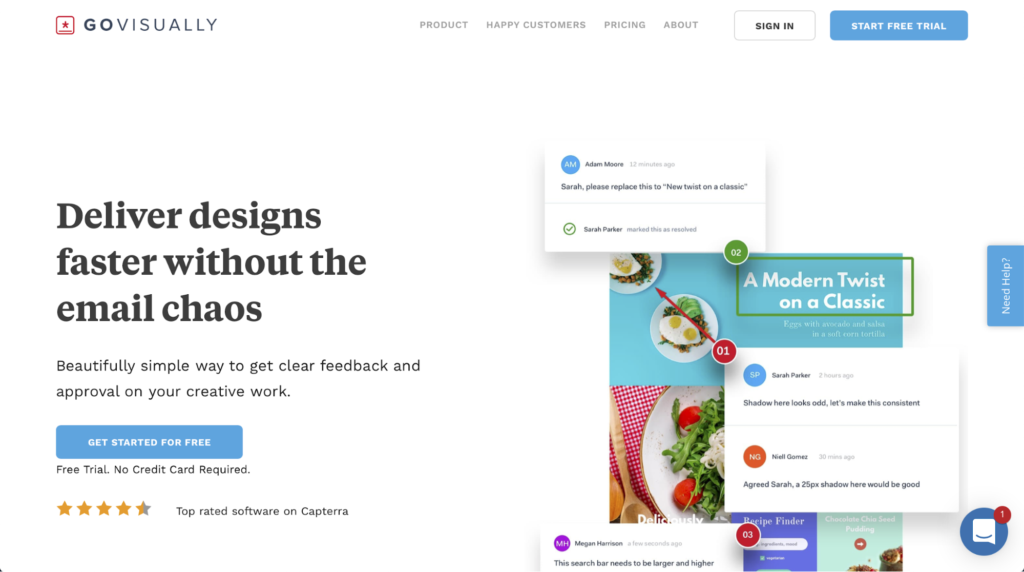
GoVisually is an online proofing tool that lets marketers collect clear feedback and approval on their creative work. The tool prides itself on helping marketers to replace endless email threads with precise comments.
Pros (+) & Cons (-)
- Minimal, yet comprehensive, proofing functionality
- Gentle learning curve
- A lean and simple system
- Restricted to image proofing
- Unintuitive email notifications
QuickReviewer
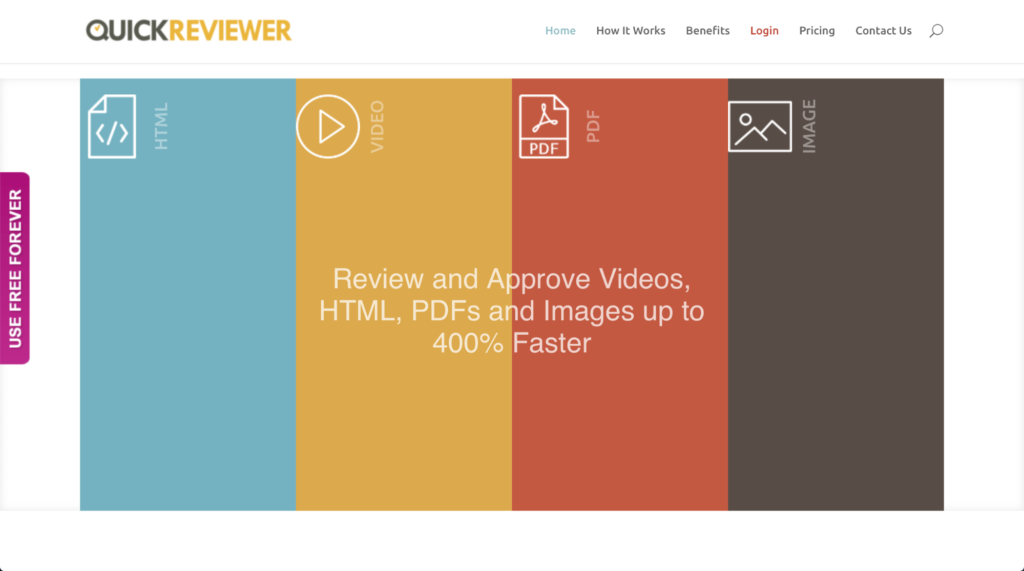
QuickReviewer is a collaborative review tool that helps marketers consolidate their feedback, thus ensuring their materials are compliant. QuickReviewer’s functionality helps marketers to drive consensus faster and to make quicker decisions.
Pros (+) & Cons (-)
- Unlimited reviews
- Aimed at small to enterprise-sized businesses
- Doesn’t have the most intuitive interface
- Limited to just one language
Digital Asset Management Software
Once marketers have created their collateral and secured approval from compliance, they’ll need to share that collateral with the rest of the team. This is best done using a piece of digital asset management software – here’s a look at some of the best options on the market.
Canto

Canto offers a digital asset management solution that empowers businesses to organize, find, and share brand assets. The tool’s intuitive look and feel drive cohesion within teams and stop them from missing a single beat.
Pros (+) & Cons (-)
- Very easy to use
- Quickly tag photos
- Occasional slowdowns with high content volume
- Regular changes that can become confusing
Wiredrive

Wiredrive is a media management and collaboration platform that helps creative professionals achieve compliance – from creation to distribution. The tool is respected for its strong tagging and filtering abilities, which make it simple to locate files.
Pros (+) & Cons (-)
- Create presentations quickly
- Save time throughout the creative process
- A lack of pricing options for storage
- No view count or tracking statistics
Bynder
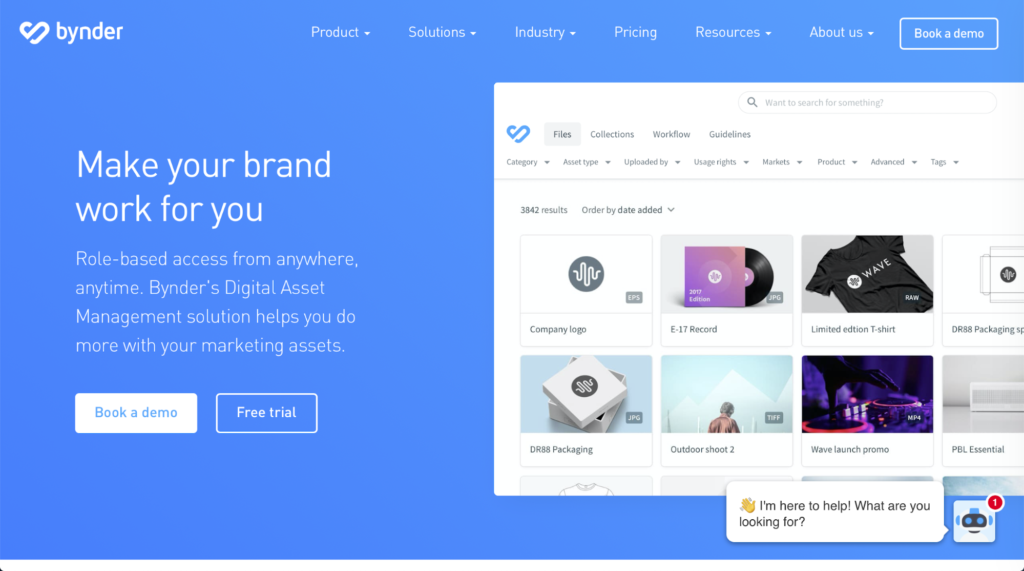
Bynder is file storage, management, and sharing solution. The tool makes it simple for marketing professionals to share role-based access with team members around the world, encouraging smoother digital asset management.
Pros (+) & Cons (-)
- Great customer service
- Easy to use with a clean UI
- Inability to preview Word documents
- Features and customizations can become overwhelming
Internal Communication Software
Communication is at the heart of marketing compliance. Team members must be able to share important information clearly and in a timely manner. Here’s a look at some of the best examples of internal communication software that you can use to facilitate marketing compliance.
Slack
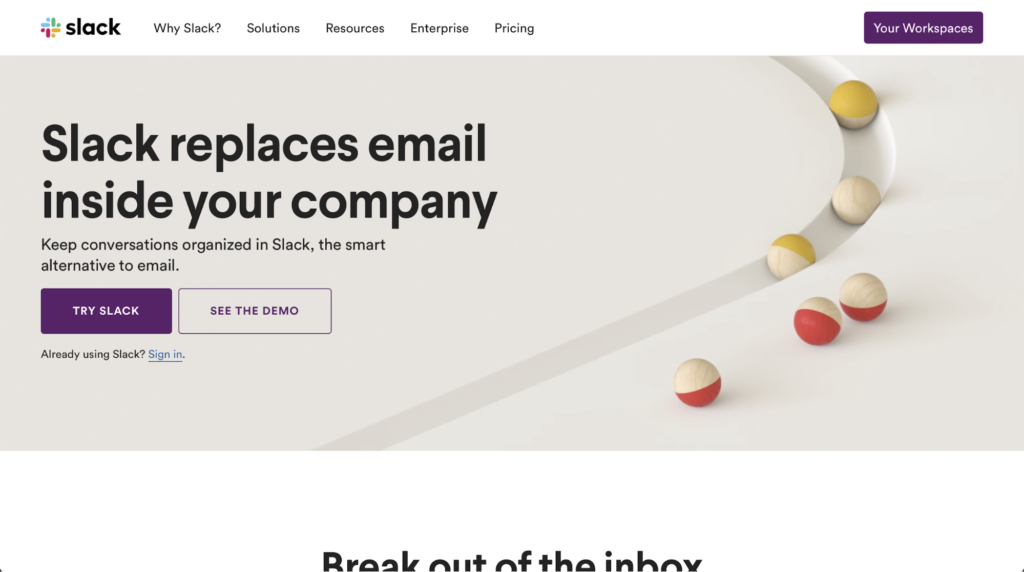
Slack has confirmed its place as one of the foremost internal communication tools for facilitating great work. In fact, this popular platform has firmly established itself as a viable alternative to email.
Pros (+) & Cons (-)
- Great flexibility concerning notifications
- You can easily arrange your communications into channels and groups
- Its simple to use with lots of functionality
- Some complexity around changing channels from private to public
- Some of the additional features can become distracting
Microsoft Teams
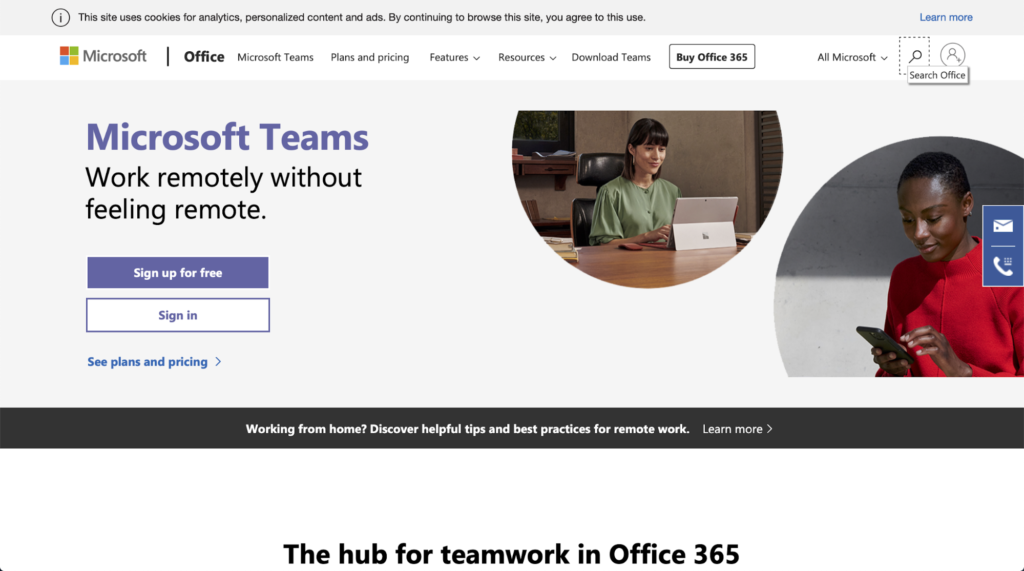
Microsoft Teams is a centralized communication hub that lets teams, using the Office 365 solution, engage seamlessly with their colleagues. The solution is a great marketing and brand compliance tool, if your team already uses Office 365.
Pros (+) & Cons (-)
- Simple for new members to get started
- Great integration with the Office 365 suite
- Permissions can become a challenge to manage
- Limited flexibility might cause team members to use alternative channels
Flock

Flock is an internal communication tool that aims to make both communication and collaboration effortless. Its ability to create new channels and communicate over text, voice, and video make this a great option for coordinating your marketing compliance activities.
Pros (+) & Cons (-)
- Praised for its user-friendly approach
- Offers multiple communication options
- The @all function can be distracting
- There are synchronization delays across devices
Compliant Email Marketing Software
Here’s a look at some email marketing software that you can use to stay in touch with your internal team members and send compliant emails to your prospects and customers.
HubSpot
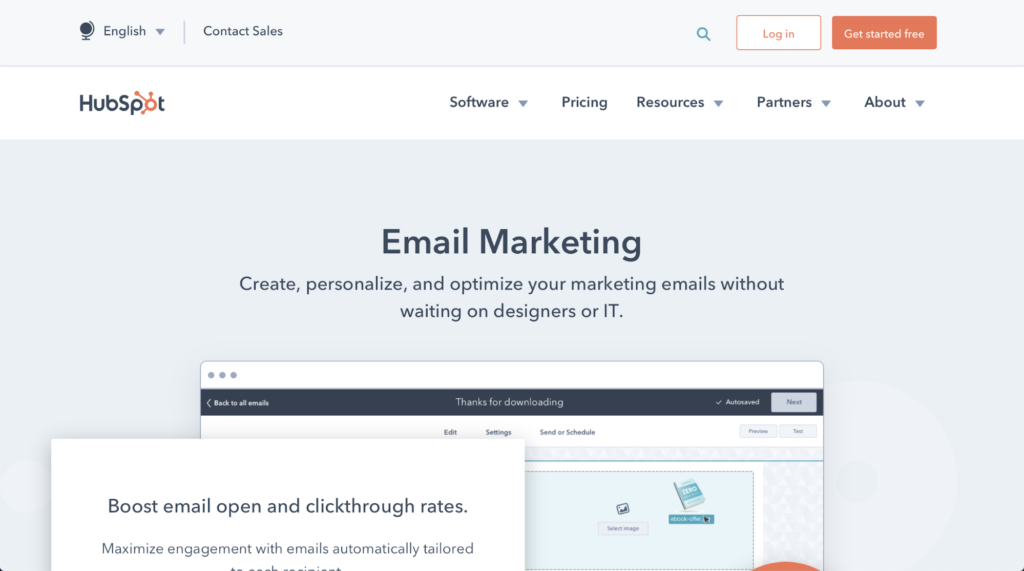
HubSpot Email Marketing allows marketers to create, personalize, and optimize attractive emails quickly. The tool also offers a range of contact management and analytics functionality that ensures you remain compliant.
Pros (+) & Cons (-)
- Simple to use and loaded with features
- A strong all-round marketing automation offering
- Has a somewhat steep learning curve
- Offers core functionality as additional add-ons
Mailchimp

Mailchimp is an all-in-one marketing platform that gives marketing professionals the ability to bring their marketing to life. The platform still has customizable email automation at its core, but now it also offers a host of complementary features to help with marketing compliance.
Pros (+) & Cons (-)
- Access sophisticated reporting features
- A clean interface and powerful editor make it easy to send great emails
- Advanced automation isn’t that effective
- Affiliate marketers are barred under the Terms of Use
Campaign Monitor
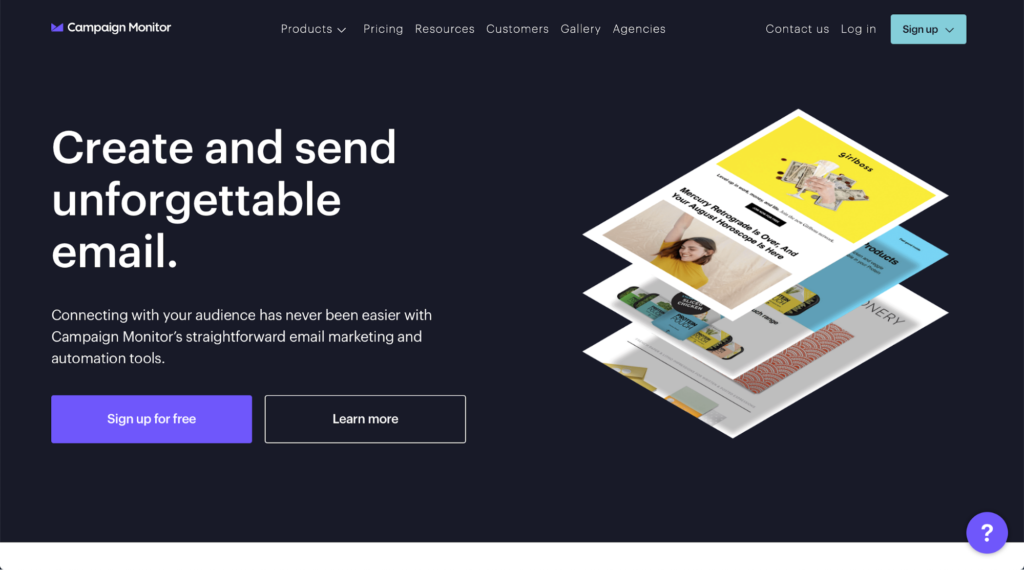
Campaign Monitor helps marketers create, automate, and send unforgettable emails. The tool offers a drag and drop editor, as well as simple template management, so that you can rest assured that you are sending compliant emails.
Pros (+) & Cons (-)
- Create attractive emails using a clean interface
- Positive customer support
- Some complaints about the regularity of updates
- A lack of starter templates to get going
Closing Thoughts
If you are going to run a resilient business that thrives in the marketplace, you’ll need to focus carefully on marketing compliance. We hope that this guide has helped you to pick up some new strategies and techniques to keep your mind on compliance, throughout the creative process.
Are you never to miss a beat when it comes to compliance? Filestage can offer unparalleled visibility throughout your creative process: be sure to start your free Filestage trial today.







